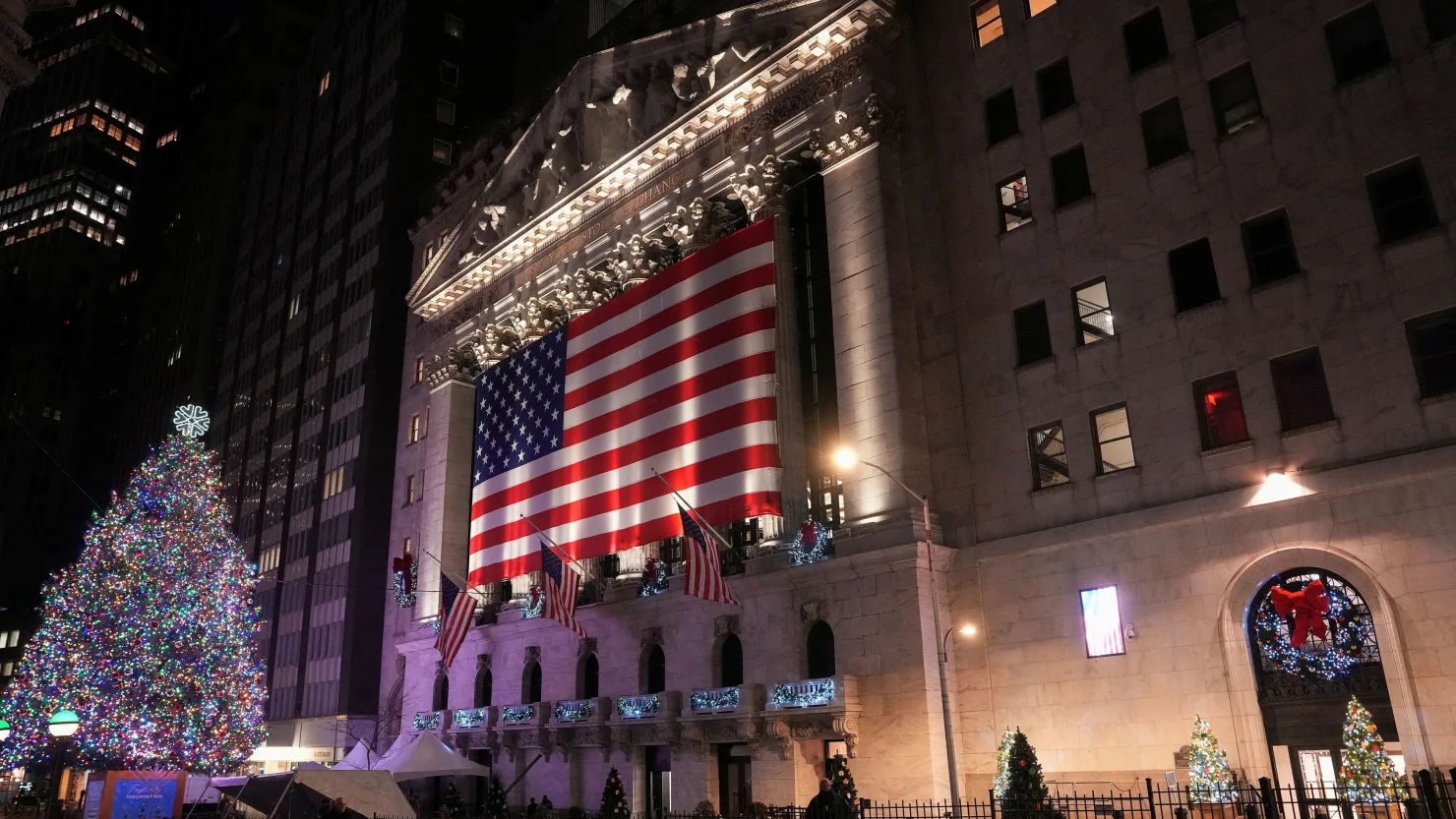Stocks fell sharply on Friday, erasing earlier gains and ending the holiday-shortened week on a sour note. The Dow Jones Industrial Average dropped more than 500 points, snapping a six-session winning streak, while the Nasdaq Composite slid 2%, weighed down by steep losses in technology shares. The S&P 500 fell 1.3%, with all 11 sectors closing in the red.
Tech heavyweights led the sell-off, with Tesla dropping 5%, Nvidia declining more than 3%, and Amazon, Microsoft, and Alphabet each losing at least 2%. The losses dragged both the Dow and the Nasdaq into negative territory for the week, while the S&P 500 managed to eke out a modest 0.2% gain after a strong performance earlier in the week.
The decline comes after Tuesday’s rally, which marked the S&P 500’s best Christmas Eve performance since 1974, according to Bespoke Investment Group. However, Friday’s downturn underscored lingering investor concerns about rising Treasury yields, economic uncertainty, and global trade tensions.
Treasury Yields Add Pressure
Rising Treasury yields added to the pressure on equities this week. The yield on the benchmark 10-year Treasury note climbed another 2 basis points on Friday to 4.603%, following its highest level since May in the previous session. Higher yields can weigh on equities, particularly high-growth tech stocks, as they raise borrowing costs and offer investors an alternative to riskier assets.
“I think what you’re seeing today is a lack of faith,” Alan Rechtschaffen, senior portfolio manager at UBS Global Wealth, said on CNBC’s Market Movers. “There’s a lot of noise about tariffs, and there’s a lot of concern about productivity.”
Mixed December Performance
Despite Friday’s sell-off, the Nasdaq remains on track for a 1.8% gain in December, bolstered by strong performances from Tesla, Alphabet, and Apple. The iPhone maker’s rally has brought it closer to a $4 trillion market capitalization, underscoring investor optimism about the tech giant’s growth prospects.
However, the S&P 500 is down 1.6% for the month, and the Dow is facing its worst monthly performance since April, with a 4.5% decline. The mixed results highlight the uneven nature of market dynamics as investors navigate shifting economic and policy landscapes.
Santa Claus Rally Still in Play
Despite the week’s volatility, some investors remain optimistic about the potential for a “Santa Claus rally,” a historical tendency for stocks to rise during the final five trading days of the year and the first two of January. Since 1950, the S&P 500 has averaged a 1.3% return during this period, significantly outperforming the average seven-day return of 0.3%, according to LPL Financial.
“The nation is experiencing a collective sigh of relief after navigating through a contentious election cycle and unusual market dynamics to end 2024 with strong year-to-date gains,” said Todd Ahlsten, chief investment officer at Parnassus Investments. “Looking ahead to 2025, the markets are expected to broaden and improve.”
Looking Ahead
As 2024 draws to a close, investors are eyeing 2025 with cautious optimism. While concerns about inflation, tariffs, and economic productivity persist, many hope that the broad market can regain momentum in the new year. For now, the focus remains on whether the historical Santa Claus rally can offset this week’s losses and set a positive tone heading into January.

